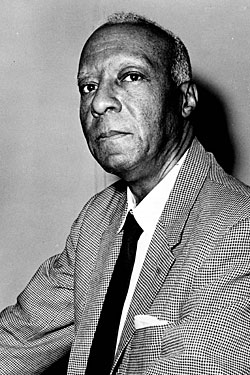Ending Racism
Geography was not necessarily the cause for discrimination. African Americans who were living in the North also experienced discrimination before and after the start of the war. Many factory owners did not want to hire African Americans, but some were forced to after the draft was instilled. Many still refused to employ African Americans.
Some African Americans merely accepted racism, while others were not so blasé. A. Philip Randolph did not accept racism. He was so outraged by such practices that he planned to lead a massive march in Washington D.C. President Franklin D. Roosevelt feared that this type of event would further divide the nation.
 |
| A. Philip Randolph |
As a result, on June 25, 1941, the president signed Executive Order 8802. The legislation prompted Randolph to call off the march. The order called for training programs and jobs in defense plants to be opened to all Americans, regardless of race, creed, color, or national origin. Additionally, the order created the Fair Employment Practices Committee, or FEPC. The FEPC was created to handle complaints regarding discrimination.
The Executive Order and the FEPC were not enough, however. In 1942, the nation saw the introduction of the Congress of Racial Equality (CORE), whose goal was to advocate nonviolence in ending racism.
These steps and initiatives helped alleviate some of the barriers between races. Yet, segregation even followed into the military with the creation of separate units for the various races and nationalities; the problems that existed were not just between whites and African Americans.